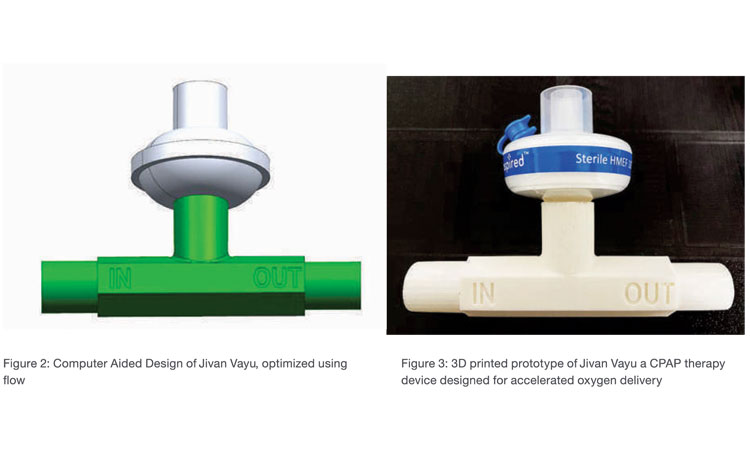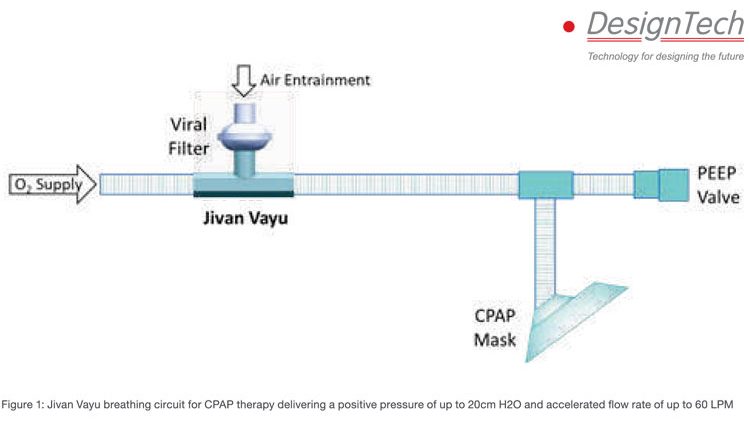The Corona virus and its unmitigated spread across continents has devastated economies and industries globally. There have been 213,050,725 confirmed cases of COVID-19, including 4,448,352 deaths, reported to WHO. As of 23 August 2021. Clearly the impact of the virus has gone beyond anything in known human history. Healthcare workers and medical scientists the world over are putting in the best efforts to find ways to save as many people as possible form the jaws of death.
A recent study has shown that the implementation of an existing treatment can save the lives of patients infected with COVID-19. The research, conducted at Lancaster University, was published in the prestigious journal BMJ Respiratory Open.
The Discussion Around Best Respiratory Treatment
COVID-19 has led to severe acute respiratory syndrome in many patients diagnosed with the disease, which causes the lungs to swell and collapse. Since the infection is attacking the respiratory functions of patients, most doctors and healthcare institutions are looking at the best ways to provide oxygen for the patients, to tide over the attack on their lungs. In the early stages of the pandemic, doctors and healthcare professionals looked at high-flow nasal oxygen (HFNO) as the primary intervention.
Now it has been found that Continuous Positive Air Pressure (CPAP) helps to keep the lungs open and allows for easier breathing. There have been previous trials showing that CPAP has had a positive impact on the severity of the patient’s symptoms, even the progression to intubation, as well as their stay in the medical supervision spaces or the intensive care unit (ICU).
The virus in moderate to severe stages affects the respiratory system requiring high flow oxygen administration. WHO recommends the use of HFNO (High Flow Nasal Oxygen), NIPPV (Non-invasive Positive Pressure Ventilation) and CPAP/BiPAP (Continuous/Bilevel Positive Airway Pressure) oxygen therapies.

CPAP as a Therapy
There have been clear studies that indicate that CPAP can be successfully used in Covid-19 patients who have been suffering from hypoxemic respiratory failure. CPAP machines use mild air pressure to keep a patient’s airways open to avoid the collapse of airways.
A retrospective case-control study examined data from CPAP intervention in the treatment of 206 patients who had tested covid positive and were suffering acute respiratory syndrome. It found that administration of CPAP was linked to a significantly lower risk of and also a much shorter hospital stay (7 or less days). The advantages it showed went beyond mere administration- if delivered within 4 days of a hospital admission, the probability of survival was above 73%, and the treatment did not require high end hospital environment. This is a critical actor given the acute scarcity of beds and ICUs that was happening during the second wave. For the future, CPAP therapy could reduce damage to the lungs and the inflammatory effects of COVID.
Challenges
Despite being established as a preferred and effective therapy for covid patients, CPAP machines are very expensive and require uninterrupted electricity supply. This is a big challenge for Indian situations. Scarcity of basic resources like power could pose a huge risk for using CPAP as a part of covid treatment, and this lack could even mean higher fatalities.
3D Printing Is Need Of The Hour
Being an extensive user of Stratasys Industrial grade 3D Printers, IIT Ropar uses 3D Printing technology for various Industrial work. In Covid times, industries have realized the need of in-house 3D printer to overcome from short of supply and develop End use parts to meet batch production needs. Stratasys 3D Printers helped us in tremendous way to perform Fit, Form and Functional test for ‘Jivan Vayu’ – A life saving device. – Dr. Khushboo Rakha , Assistant Professor, Department of Metallurgical and Materials Engineering
Power Free Yet Powerful
To resolve this challenge IIT Ropar researchers have developed a low cost solution to deliver CPAP therapy through any oxygen source. This could be a standard oxygen cylinder or main oxygen line at an accelerated flow rate. With this facility, there will be no dependence on electrical power supply.
This potentially lifesaving device has been developed at the ‘Advanced Materials and Design Lab’ led by Dr. Khushboo Rakha, Assistant Professor, Metallurgical and Materials Engineering. The team has collaborated with Mr. Suresh Chand, Faculty In charge, Rapid Prototyping Lab at Punjab Engineering College, Chandigarh for 3D printing the device.
This is a 3D printed, power free device ‘Jivan Vayu’ which can deliver high flow oxygen (20 – 60 LPM) while maintaining a continuous positive pressure of up to 20 cm H2O, resulting in a low cost and accessible CPAP therapy. The device is designed to maintain an FiO2 of above 40% with a PEEP (positive end-expiratory pressure) of 5-20 cm H2O. Additionally, the device houses a viral filter that ensures the entrained air does not bring in any pathogens from the environment. This filter is located at the air entrainment end and delivers a viral efficacy of 99.99%. The design specifications have been modelled to optimize an accelerated flow of up to 60 LPM (from an oxygen cylinder).
The accuracy and cost of this device is ideal, since it has been manufactured using 3D Printing.
3D Printer gives us the wings to explore the possibilities to any extent. Single setup of 3D Printer helps Educators, Researchers and Innovators to produce the validated functional model by their own. – Dr. Khushboo Rakha , Assistant Professor, Department of Metallurgical and Materials Engineering
Advantage of JIVAN VAYU
The Jivan Vayu device is a cost effective CPAP therapy delivery device, which is the much needed requirement in the current situation in India. The third wave is already spreading in some parts of the country, and this device could mean the difference between life and death for perhaps lakhs of people.
Its manufacturing is also extremely efficient since it is additively manufactured, using 3D printers. The material and specifications are completely customizable and still deliver efficient therapy to COVID patients. In addition, there is the advantage of non-dependence on electric power. With this design, it can provide accelerated oxygen flow rates of up to 60 LPM and positive pressure of up to 20 cm H2O (Recommended 10 cm H2O). These attributes make it a life saving device for areas that have no or low power resources. Its cost effectiveness (since it is a 3D printed device) makes it affordable for a large section of Indian populace- putting it within reach of the people who need the treatment but also cannot afford a huge hospital bill.
DesignTech Systems Support
The DesignTech team was very supportive in the tough times of Covid 19 and provided us full support to select the appropriate Printer for the required applications.



